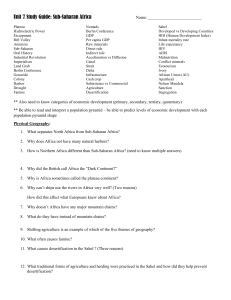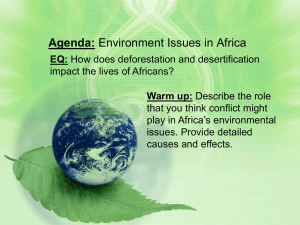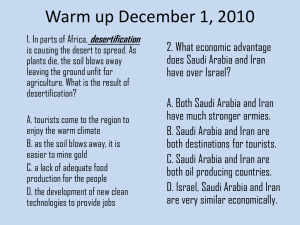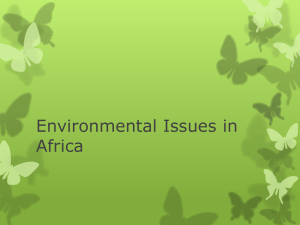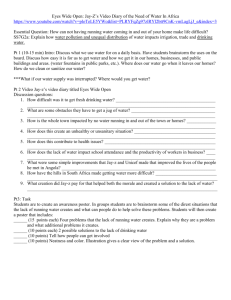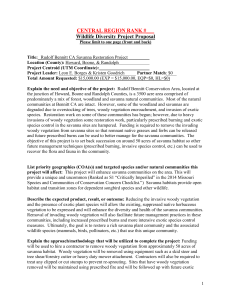Geography of Africa - Green Local Schools
advertisement
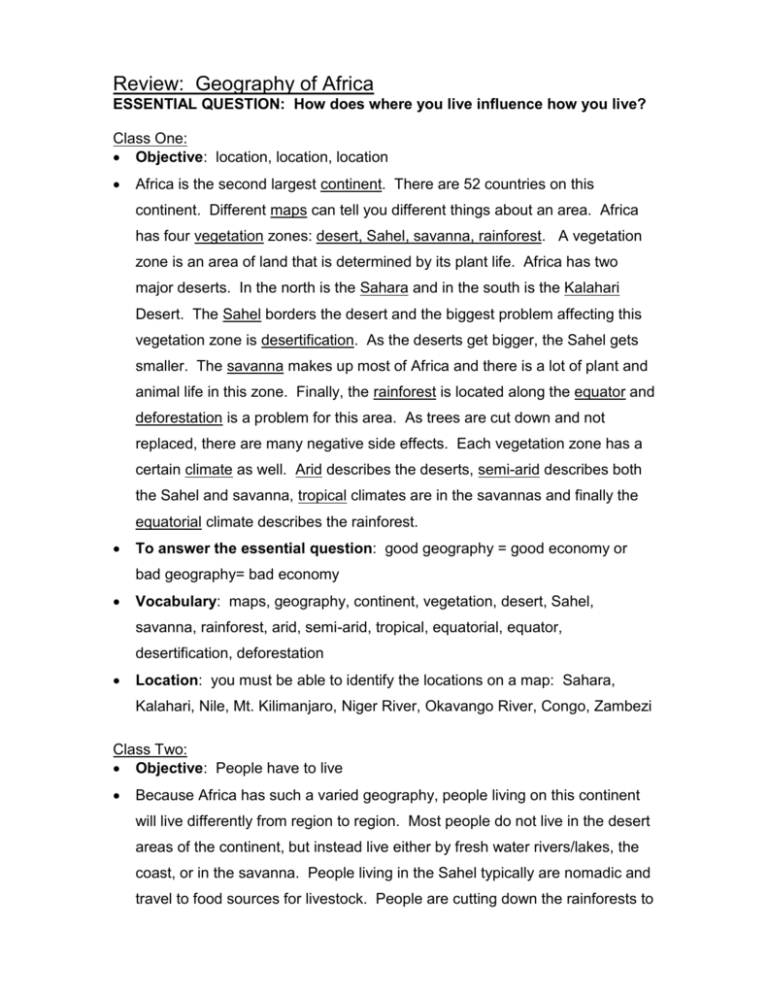
Review: Geography of Africa ESSENTIAL QUESTION: How does where you live influence how you live? Class One: Objective: location, location, location Africa is the second largest continent. There are 52 countries on this continent. Different maps can tell you different things about an area. Africa has four vegetation zones: desert, Sahel, savanna, rainforest. A vegetation zone is an area of land that is determined by its plant life. Africa has two major deserts. In the north is the Sahara and in the south is the Kalahari Desert. The Sahel borders the desert and the biggest problem affecting this vegetation zone is desertification. As the deserts get bigger, the Sahel gets smaller. The savanna makes up most of Africa and there is a lot of plant and animal life in this zone. Finally, the rainforest is located along the equator and deforestation is a problem for this area. As trees are cut down and not replaced, there are many negative side effects. Each vegetation zone has a certain climate as well. Arid describes the deserts, semi-arid describes both the Sahel and savanna, tropical climates are in the savannas and finally the equatorial climate describes the rainforest. To answer the essential question: good geography = good economy or bad geography= bad economy Vocabulary: maps, geography, continent, vegetation, desert, Sahel, savanna, rainforest, arid, semi-arid, tropical, equatorial, equator, desertification, deforestation Location: you must be able to identify the locations on a map: Sahara, Kalahari, Nile, Mt. Kilimanjaro, Niger River, Okavango River, Congo, Zambezi Class Two: Objective: People have to live Because Africa has such a varied geography, people living on this continent will live differently from region to region. Most people do not live in the desert areas of the continent, but instead live either by fresh water rivers/lakes, the coast, or in the savanna. People living in the Sahel typically are nomadic and travel to food sources for livestock. People are cutting down the rainforests to either make more money for a countries’ economy or to make more room for people to live. Major cities have developed where the geography is better and people have migrated to those areas. To answer the essential question: Your geography determines how you will live. Vocabulary: none Location: you must be able to identify the locations of Nile, Okavango, Zambezi, Congo, and Niger rivers Class Three: Objective: Push and Pull Factors Push and Pull factors describe the reasons for why people migrate. People can move for many types of reasons. A pull factor describes a positive reason for migration. Examples could be job opportunities, enjoyment, or even better educational opportunities. A push factor describes a negative reason for migration. Typically a push factor forces the migration. Examples could be natural disasters, poverty, political oppression, or loss of job. There are many types of push/pull factors. Geographic push factors could be desertification and deforestation. To answer the essential question: There is a connection between geography and reasons for why people migrate. There are many geographic push and pull factors that influence where and how people live. Vocabulary: push factor, pull factor, deforestation, desertification Location: none


